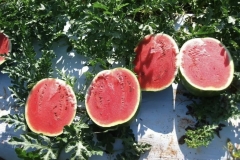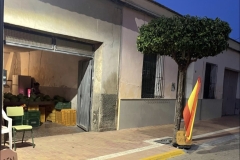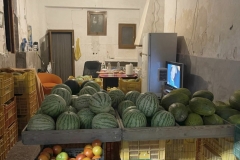
How to recognize a good watermelon?
Watermelons in Spain are among the tastiest in the world. Their season runs from May to September, and many of them come from the Murcia region, renowned for growing the country's finest fruit.
How to recognize a good watermelon? Pay attention to the color of the rind – it should be a vibrant green, and the areas where it touches the ground should be dull. When you touch the watermelon, it should feel firm and heavy, indicating it's juicy and fresh. It's also worth checking the rind for any rot or damage.
The history of watermelons in Spain dates back to the ancient Romans, who introduced them to the Iberian Peninsula. The Spanish quickly fell in love with the fruit and began cultivating it. Today, watermelons are a staple in Spanish cuisine and beyond—they are popular worldwide. However, it's not just the Spanish who adore these juicy fruits. One day, an Arab merchant in Egypt heard about the famous Spanish watermelons and decided to try them. Unfortunately, his attempt to bring a watermelon to Cairo failed, and the fruit rotted during transport. However, the merchant decided not to give up and bought an entire field of watermelons in Spain. Before leaving for Egypt, he taught local farmers how to prevent rot during transport. Thanks to this, Spanish watermelons reached Cairo and quickly gained popularity in Egypt and throughout the Arab world. So, if you're a watermelon fan, be sure to try some Spanish watermelons during your visit to the Costa Blanca—you certainly won't be disappointed!
Watermelons are not only delicious but also very healthy. Due to their water content (over 90%) and minerals such as potassium and magnesium, they are a great way to hydrate the body. Additionally, watermelons contain the valuable antioxidant lycopene, which may protect against heart disease and cancer. To recognize a good watermelon, it's worth paying attention to a few things. First, it's important that the skin is uneven, with spots and bumps on its surface – this indicates that the watermelon has received adequate sun and water. Another important indicator is the core – it should be dry, indicating that the watermelon is ripe. To check if a watermelon is sweet, simply make a cut and taste the flesh. And now for a fun fact – according to Spanish tradition, if you want to connect with others, you should cut a watermelon in half and share it with your loved ones. Many Spanish cities hold watermelon festivals, where you can try different varieties of this delicious fruit.









